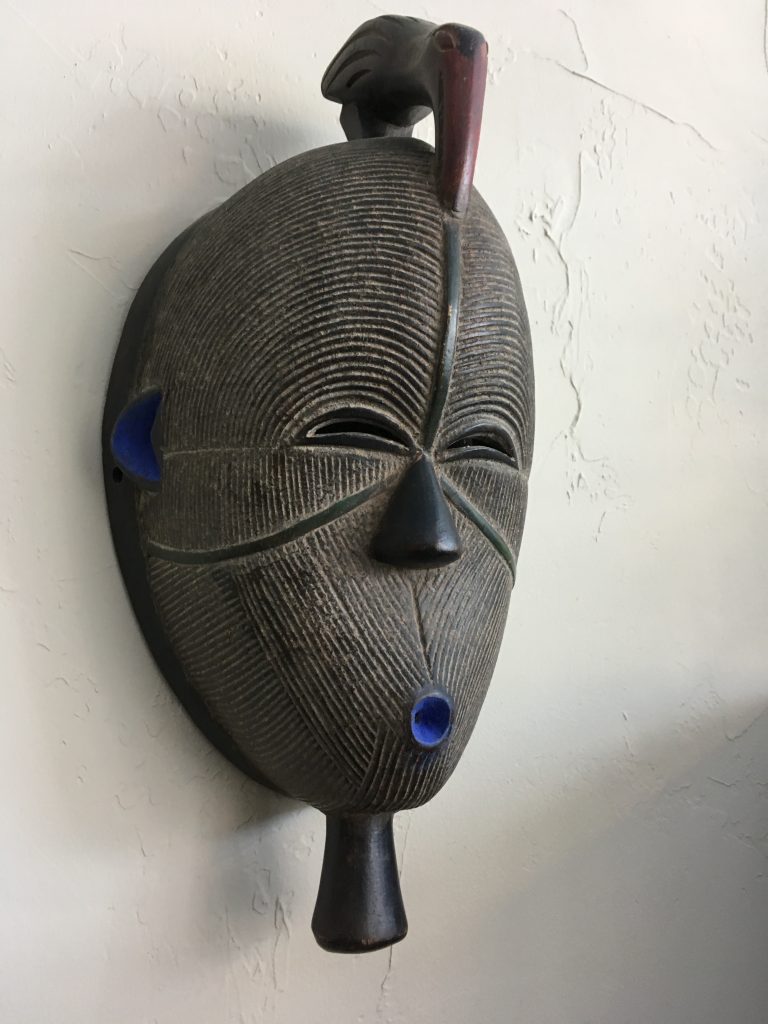
Yaure, Ivory Coast; wood with accents in blue and red; probably 60-80 years old.
This mask type with a depiction of a hornbill, or perhaps a species of woodpecker, is called “lomane”. The word derives from “anoman” which means “bird” in the Baule language. In most Yaure village, the lomane belongs to the Je group of masks. The mask appears to be adorned by a Je dancer at funerals of elderly men. The dancer dances around the body of the deceased, then bends over and touches it. Yaure folklore has it that the mask kills the worms that decompose the body, so the dance act could be interpreted as a symbolic purification. At this rite, women are not allowed to see the mask dancers.
The face of this mask is set off by fine engraved lines all over. It has close-set eyes marked by flat arches and a horizontal incision, a short triangular nose, and a small, perfectly circular mouth that creates the impression of pursed lips. Je masks often has parts vividly painted. This one has accents of blue emphasizing the mouth and a red bill on the bird that perched firmly on its head.
This mask was acquired in the jungle of South Africa and not in a tourist shop. It is perhaps 50-70 years old. Due to heat and humidity in the jungle, wood artifacts tend to rod and seldom last 100 years.